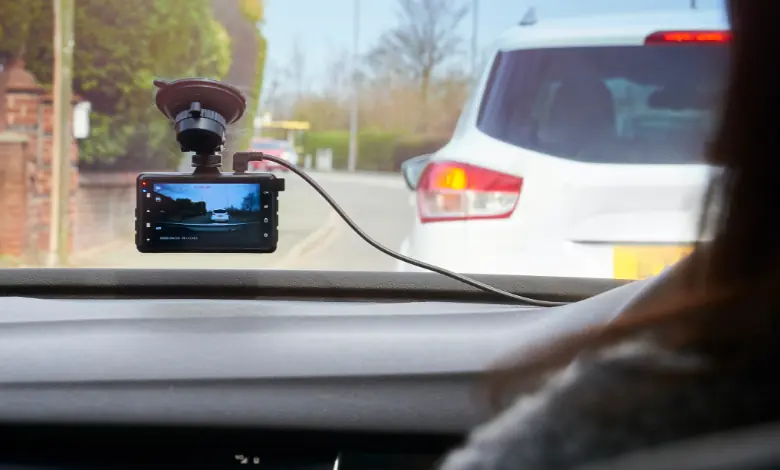The Role of Dashcams and Telematics in Car Accident Litigation

Over the past few years, dashcams and telematics technology have revolutionized the litigation landscape. These innovations offer evidence that can determine fault, support claims, and even prevent accidents from occurring in the first place. This article aims to examine how dashcams and telematics impact various aspects of auto accident claims. From accident prevention and driver safety to streamlining the claims process and influencing case outcomes.
The Impact of Dashcams on Accident Prevention and Management
Dashcams record driving incidents from a first-person perspective. This footage can provide impartial evidence to protect drivers against fraudulent claims and shed light on accident causes.
Studies have shown that having a dashcam leads to safer driving habits, with the Metropolitan Police reporting 400 fewer collisions per month in vehicles equipped with dashcams.
This comprehensive data can provide insights into vehicle speed, braking patterns, and other critical factors. It aids both investigators and car accident lawyers in building a solid case. Four key mechanisms by which dashcams improve accident prevention and streamline post-crash claims management:
1. Prevention of Staged Crashes
Dashcam video acts as a safeguard against attempted insurance fraud in the form of caused collisions. Staged crash schemes for illicit injury claims, often dubbed crash for cash ploys, have become more widespread in recent years. Footage proving a driver’s innocence protects against these predatory scams.
2. Acceleration of Claims Processing
During insurance claims assessments, dashcam evidence enables much faster review compared to disputes. Unbiased visuals allow adjusters to make coverage and liability decisions in the aftermath of an accident.
3. Driver Safety Behavior Modification
Many research experiments have confirmed that drivers exhibit greater care and attention. When they are about to realize that their driving is being recorded. The presence of a dashcam creates a watchdog effect, where drivers get fewer distractions and risky behaviors to avoid video documentation.
4. Crash Reconstruction and Prevention
Authorities advocate widespread dashcam adoption to capture the causes of collisions across traffic environments. Detailed analysis of contributing factors from these videos informs infrastructure improvements and promotes updated driver education to help prevent recurrences through dashcam-enabled pattern spotting.
In essence, dashcams not only provide impartial evidence to settle post-crash insurance claims but also motivate drivers to drive safely. This dual benefit improves road safety, leading to the avoidance of accidents and better protection for all nearby vehicles and pedestrians.
By harnessing the power of video accountability, dashcams are proving to be invaluable investments for enhancing road safety.
The Financial Implications of Dashcams
The increasing reliance on dashcams provides substantial financial incentives for both drivers and insurers. Analysis predicts that the global dashcam market will climb from a value of $4.02 billion in 2023 to over $7.37 billion by 2028.
For drivers, dashcam video evidence can impact insurance rates and claims outcomes. One insurer reported a 10-15% decrease in premiums for dashcam users due to fewer at-fault claims.
For insurers, lower claim costs and litigation risk reduce expenses. Dashcams are becoming a crucial factor in cost-benefit assessments for both insurers and policyholders.
The Legal Landscape of Dashcam Usage
Dashcam usage varies across geographic regions, with the majority of countries permitting video recording for crime prevention. At least 15 European countries including Russia, Sweden, and Poland allow dashcam installation.
But, regulations continue to evolve worldwide about privacy issues such as surreptitious recording of police encounters. Most US states permit dashcam use but certain restrictions apply, such as obscured windshield mounting and audio recording consent.
Despite complex legislation, legal experts approve of the use of dashcams. Video evidence lends unparalleled insight into accident liability while discouraging insurance fraud. This is particularly relevant in Tesla accident claims, where recorded footage can help determine whether driver assistance systems were engaged at the time of a crash. As more Tesla accident claims arise, dashcams could play a crucial role in resolving disputes and ensuring fair outcomes.
With advancing technology and evolving privacy concerns, dashcams are likely to see increased adoption and gain legal legitimacy.
Leveraging Telematics for Vehicle Tracking and Fleet Management
Telematics technology utilizes Internet connectivity and GPS to communicate real-time vehicle usage data. This data offers much improvements in fleet oversight and driving analytics. Instantaneous feedback allows fleet managers to track critical safety metrics like speeding, harsh braking, idling, and maintenance issues.
As telematics penetration expands in commercial fleet verticals, drivers will grow accustomed to data tracking and accountability measures. This cultural acclimatization could smooth adoption among consumer vehicles as well.
The Combined Potential of Dashcams and Telematics
While dashcams and telematics serve distinct functions, their powers combine to offer unrivaled accident reconstruction and risk management capabilities.
Telematics captures expansive driving data leading up to a collision. Dashcam footage provides critical visuals from the cabin during the incident. Fusing these technologies furnishes a comprehensive event representation for precise claims handling.
Among commercial fleets and delivery vehicles, this one-two punch enables superior accident avoidance while maintaining rigorous accountability. As premiums and legal judgments hinge on fault attribution, integrated dashcams, and telematics offer the tools to justify claims beyond dispute.
Key Takeaways
- Dashcams prevent accidents while expediting fair claims
- Rapid growth forecasts signal increased economic relevance
- Legal landscapes still evolving but the support system rises
- Telematics track critical driving performance data
- Combined, telematics and dashcams unlock superior crash analysis
With road accidents and unavoidable travel risk, drivers demand tools to navigate litigious aftermaths. Dashcams and telematics respond to the need for heightened awareness and reduced consequences. This may offer valuable solutions in various contexts. Their life-saving and cost-saving impact likely marks just the beginning as adoption accelerates in the future.
Conclusion
In a short span of time, dashcams and telematics have evolved to be almost a necessity for proactive accident preparedness. The road safety benefits they offer serve as an incentive for voluntary adoption across all vehicle classes. But, as digital witnesses become more commonplace in this modern digital world. Drivers may soon face insurance penalties if they choose not to opt in.
FAQs
1. How do dashcams work, and what do they record?
Dashcams are cameras mounted to a vehicle’s dashboard or windshield to record driving footage. They capture video and audio both inside the cabin and through the front window. This creates a visual record of trips that can provide evidence if an accident occurs.
2. Are there legal restrictions on dashcam usage?
Dashcam legality varies based on local privacy laws. Most US states permit forward-facing video recording but some prohibit sound recording without consent from passengers. Windshield mounting position and camera concealment regulations can also apply. Drivers should research state statutes before use.
3. How are telematics transforming commercial insurance?
By tracking detailed vehicle usage metrics through connectivity and GPS. Telematics allows insurers to check policyholder driving behavior and assess risk profiles. This enables pricing tailored to how, when, and where fleet vehicles or trucks operate. This technology is revolutionizing commercial insurance by enhancing underwriting accuracy.






